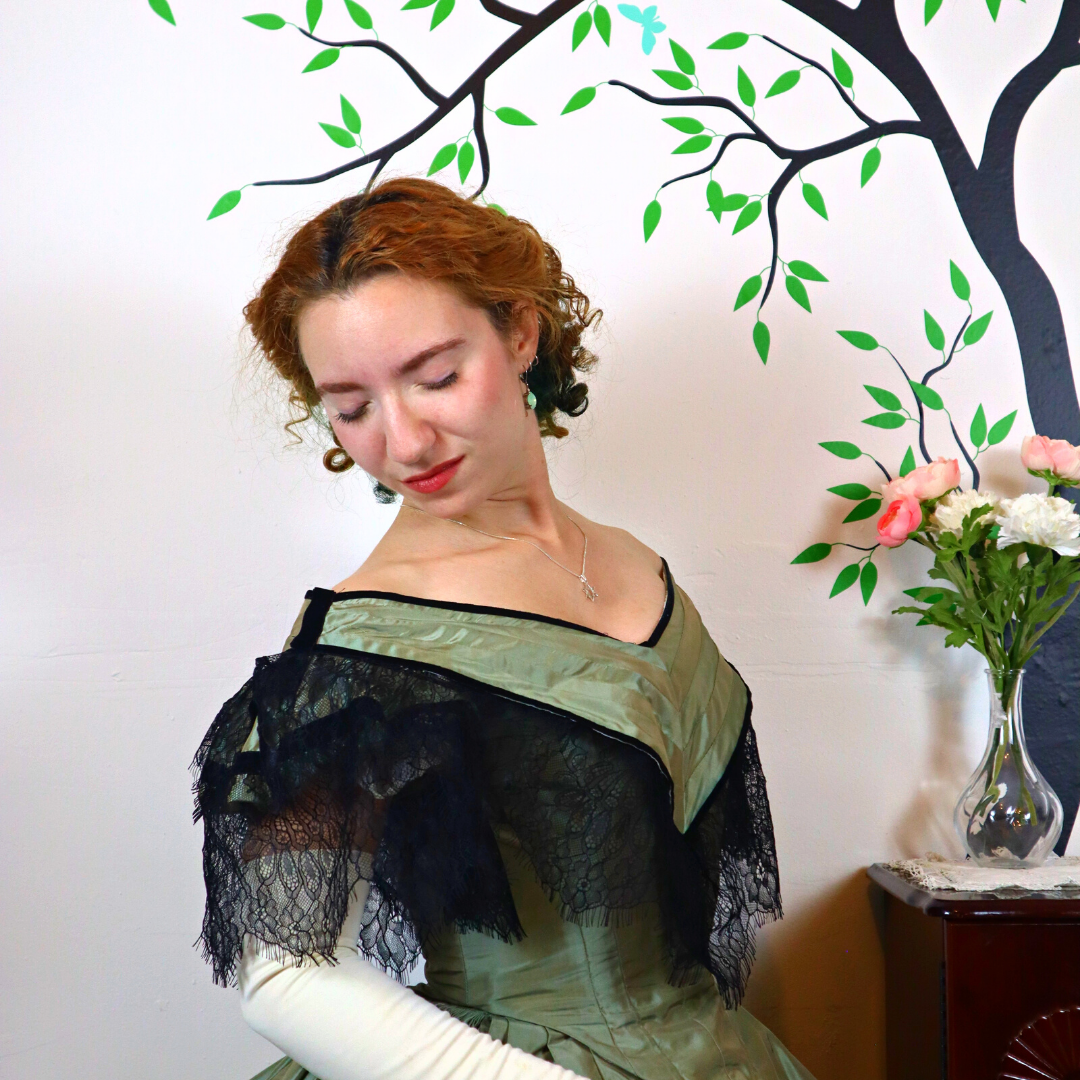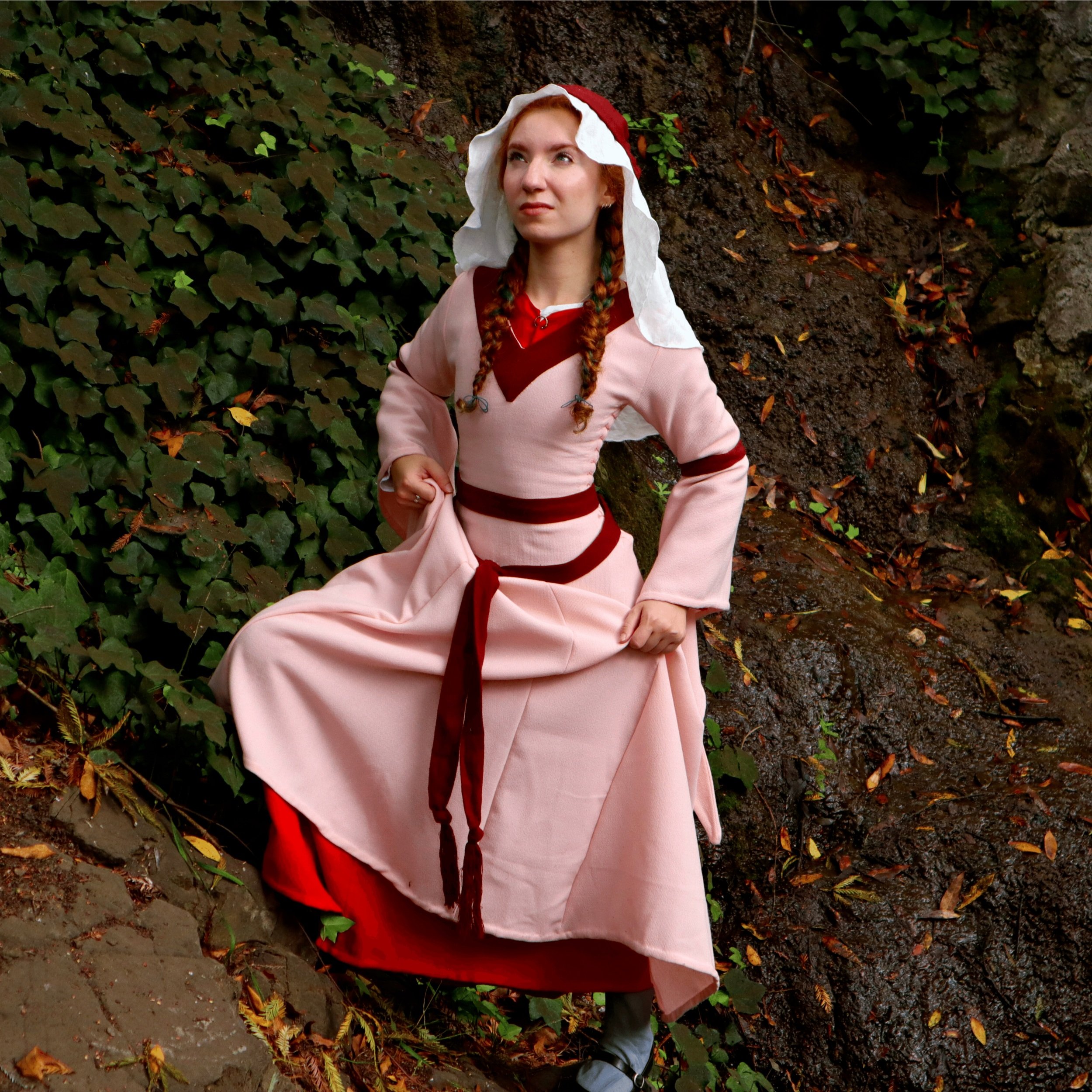I made an Edwardian Morticia Addams costume
I made an Edwardian Morticia Addams costume
I made a Morticia Addams costume for Halloween, but she's a Gibson Girl! I love the Addams Family, and Morticia's iconic look translates perfectly to a historical Edwardian skirt. Since I already owned a goth Edwardian Gibson Girl blouse, this easy Edwardian skirt was all I needed to make my Morticia Addams Halloween costume complete!
Sewing this easy Edwardian trumpet skirt was one of the simplest projects I've done in a while! Gibson girl fashion involved an S-shaped silhouette with skirts that draped and clung around the hips, which reminded me of Morticia Addams' clingy black dresses. Last year I'd already made a black gothic Gibson Girl blouse, so a gothic Edwardian skirt seemed like an obvious follow-up. Every piece of this DIY Morticia Addams cosplay is also something I can wear for daily historybounding outfits, or for other Edwardian or Victorian gothic fashion! I hope you enjoy this little Edwardian skirt tutorial and have a happy Halloween 🦇
-
[tinkly, mysterious music]
I have this thrifted black skirt, and every time I wear it, people tell me I look like Morticia Addams. I do love it, but on account of its being polyester and sliiiiightly see-through, I really wish I had a more wearable version. It looks kind of like an Edwardian trumpet skirt . . . right? I already have that solid black Witchy Edwardian Blouse, and Halloween is coming up. Why not make it a whole outfit?
[paper rustling]
[scissor ASMR]
I'm not completely sure of the sizing for this pattern, so I'm going to trace it off rather than cutting it out. As I do, I can grade between sizes to match my measurements. I'm also shortening the hem a few inches, using a compass to evenly remove length. The back panels are wider than my tracing paper, but I can easily tape together some off-cuts to make up the space.
[mysteriousness of music intensifies]
I'll be making this skirt from a medium-heavy black rayon. "But V", you say, "Rayon isn't historically accurate!". For those who did not see the video where I talk at length about my feelings on that silly idea, let me explain. Rayon has a beautiful, fluid, clingy drape that will make it much easier to recreate Morticia's iconic silhouette . It's also cheaper than the nearest period equivalent, which would probably be a wool-silk crepe blend, and will breathe a little better. As it happens, I care more about all of those things than I do about perfect "historical accuracy" for this project.
[quiet snipsnipsnip]
[more snip, music ends]
[new, spoopier music]
I’ll begin by machine-overcasting and then stay-stitching the top edges of all seven skirt panels. These are cut on a slight curve, so I don’t want them fraying or stretching.
Since I am making a very deconstructed version of this skirt, instead of the pattern’s recommended in-built petticoat or hem facing . . . the construction seems very simple. “Sew all the skirt panels to eachother, except the center back seam”. This does require some care, though, as almost everything is cut on some kind of curve and must be carefully lined up, pinned, and sewn without stretching it out.
[spoooooky flute]
I have predictably disregarded the instructions for a waistband, and instead invented my own. This rayon’s lovely fluid drape comes at the cost of stability, so the waistband and placket will need something to keep it in shape. I’m covering some one-inch twill tape with the fashion fabric by stitching it to one edge and wrapping it around for the waistband.
The placket shall be made from a different fabric altogether : some leftover black cotton from the Witchy Edwardian Blouse. [wind howls. much scary!]
[undignified iron squeak, steam puffs]
One side is essentially a ten-inch long rectangular facing, secured in place by topstitching.
The other side sticks out one inch from the center back and will be overlapped. Then, the center back can be sewn up.
The skirt panels are sewn to the waistband through the twill tape, providing much more stability than this slinky rayon ever could on its own. For closures, I’m using my nemesis : the hook-and-eye, tolerated because I love a clean outside finish more than I hate using these.
With my hem-leveler, I’m marking the desired length over my magical organdy petticoat and reproduction 1890s boots. Despite shortening the pattern four inches and wearing a bustle pad, there is still quite a bit of excess length at the back. At least an hour of ironing later, the skirt is invisibly finished with a blind hem.
[mysterious music fades out]
[dramatic, gothic piano waltz]
[eerie violin melody joins piano]
[violin melody crescendoes]
[music slows and ends]





